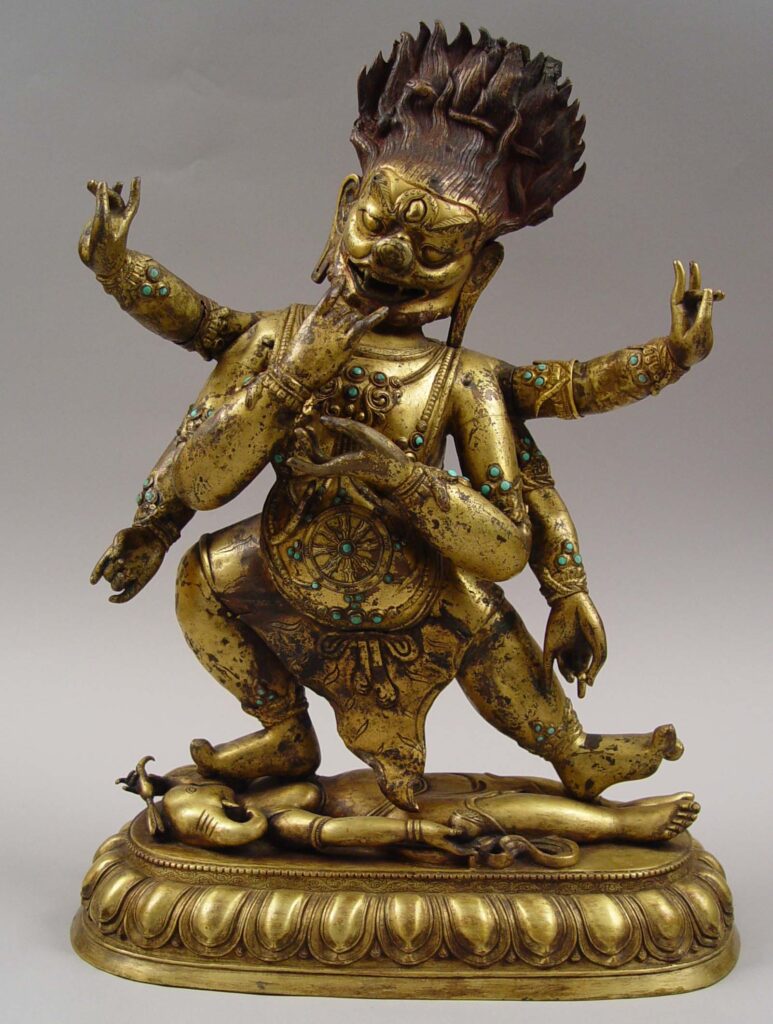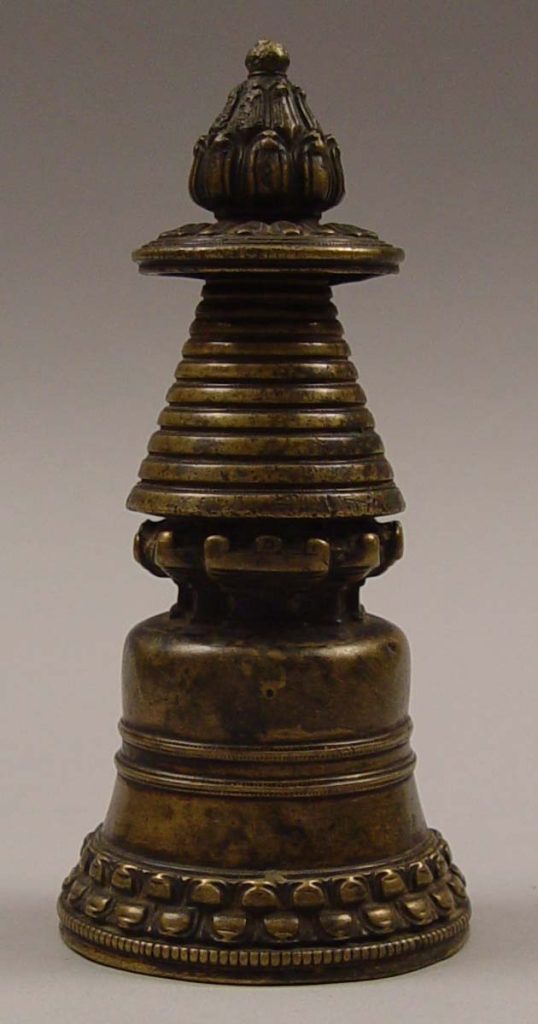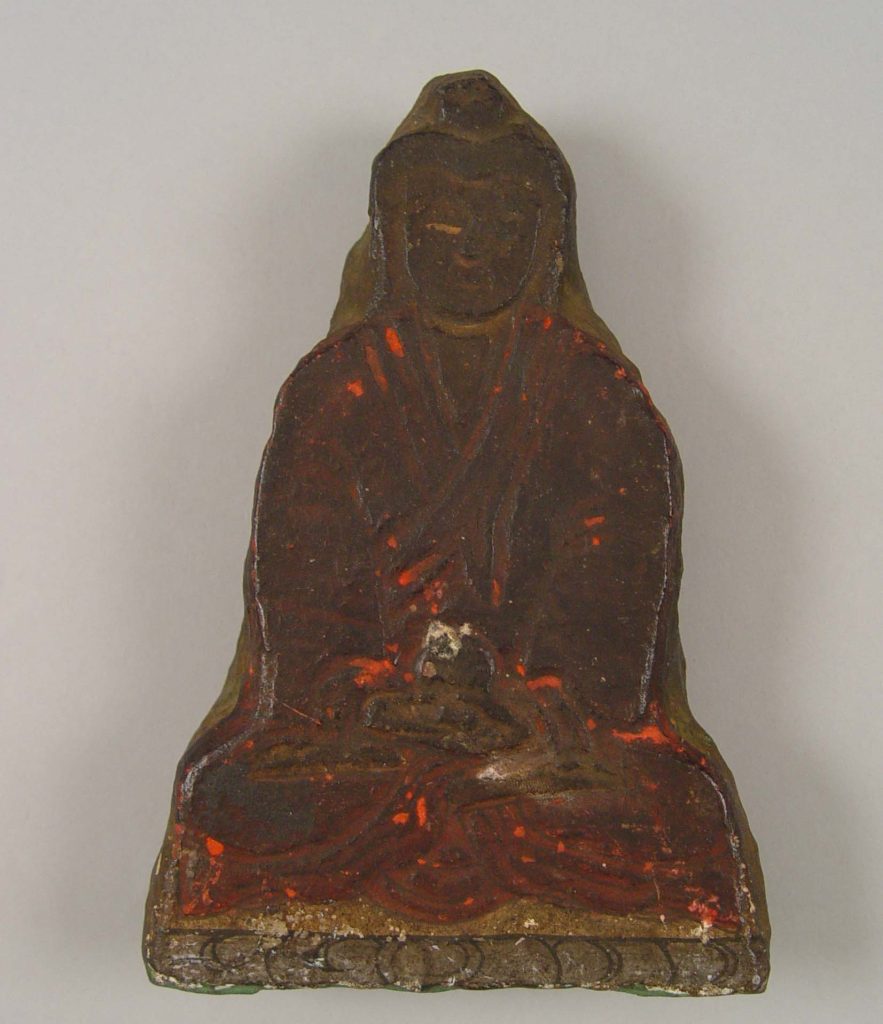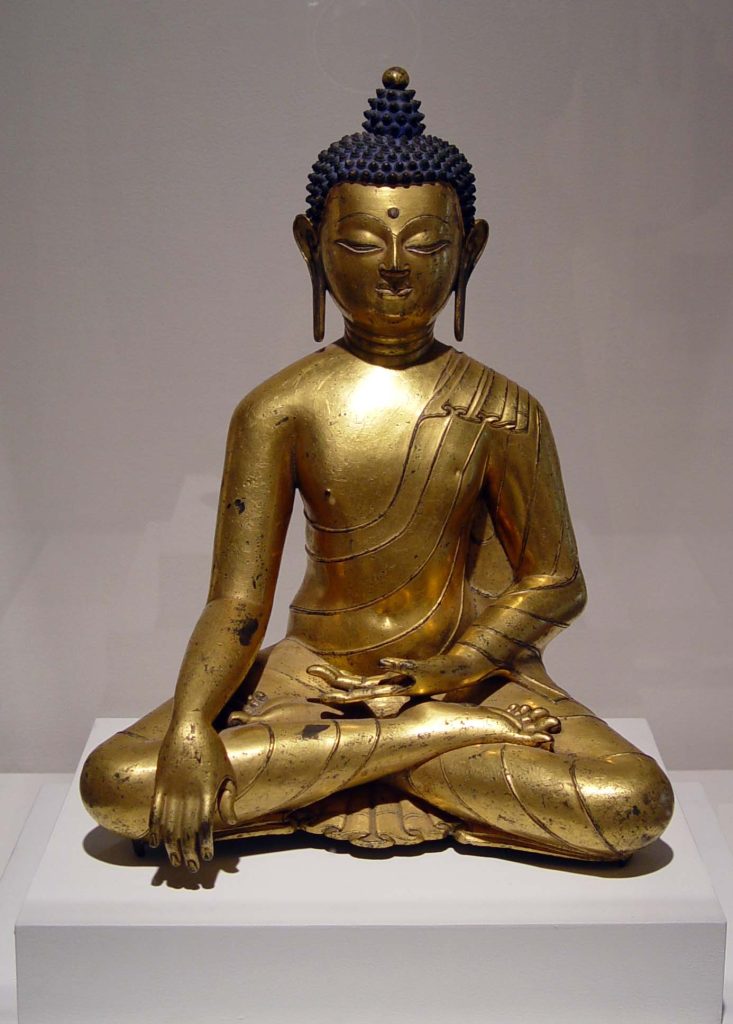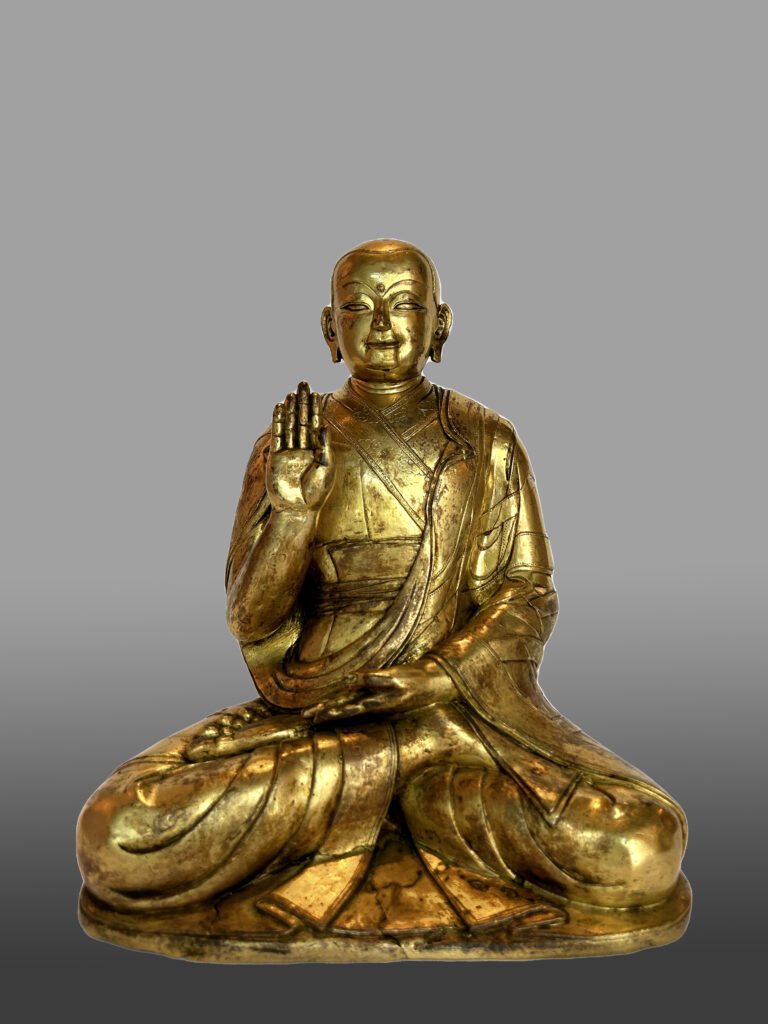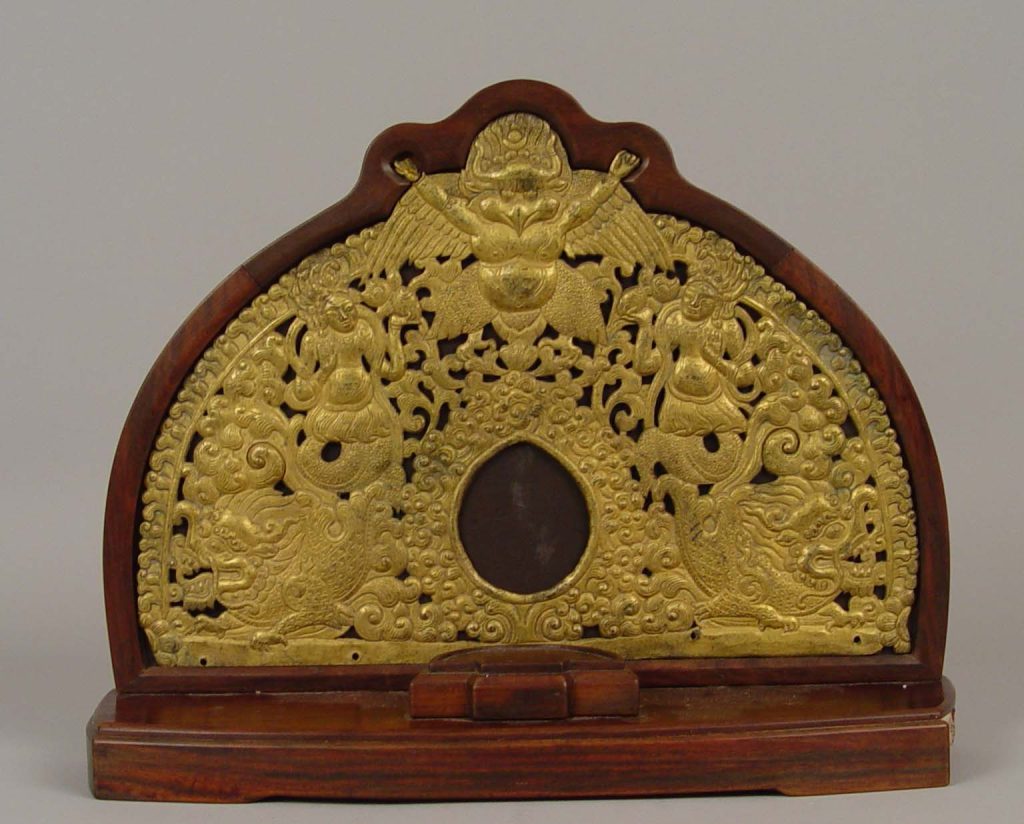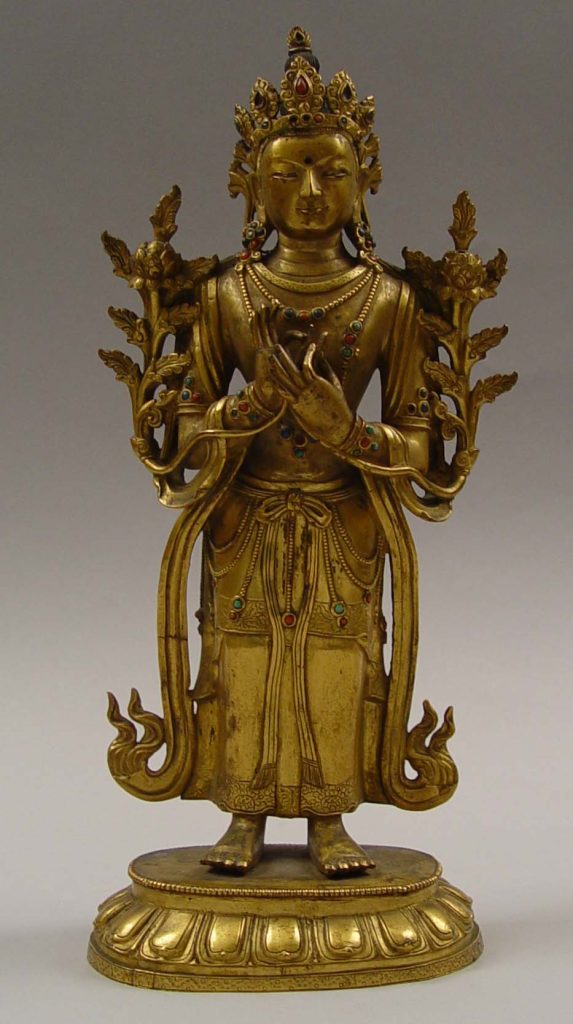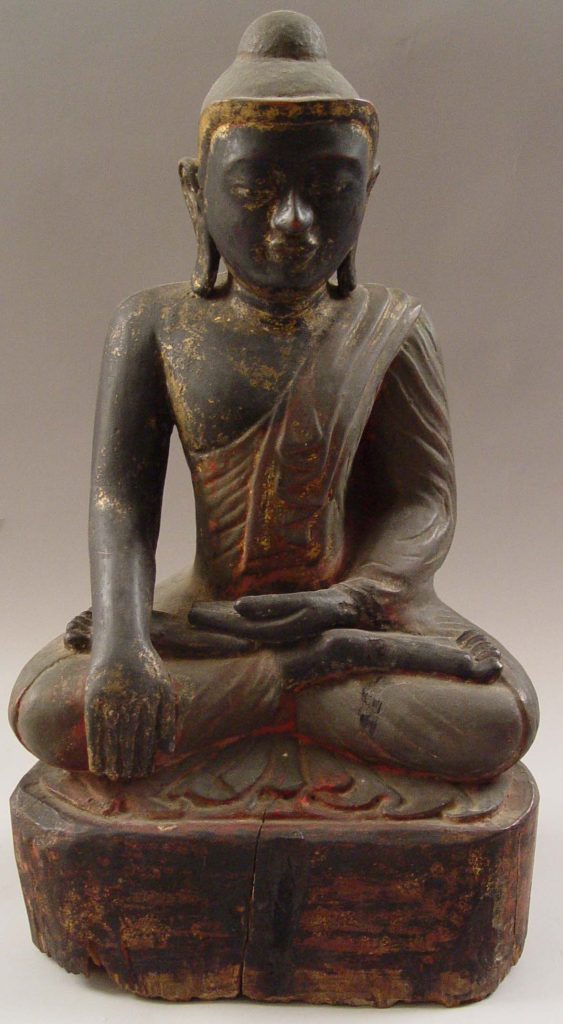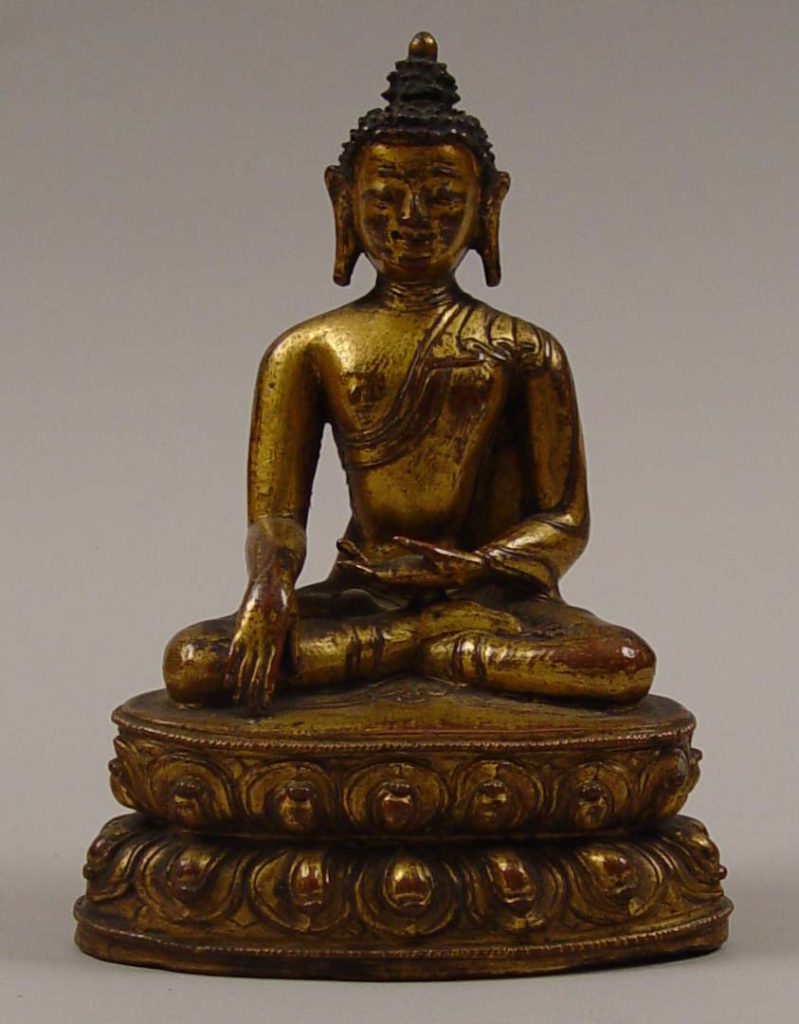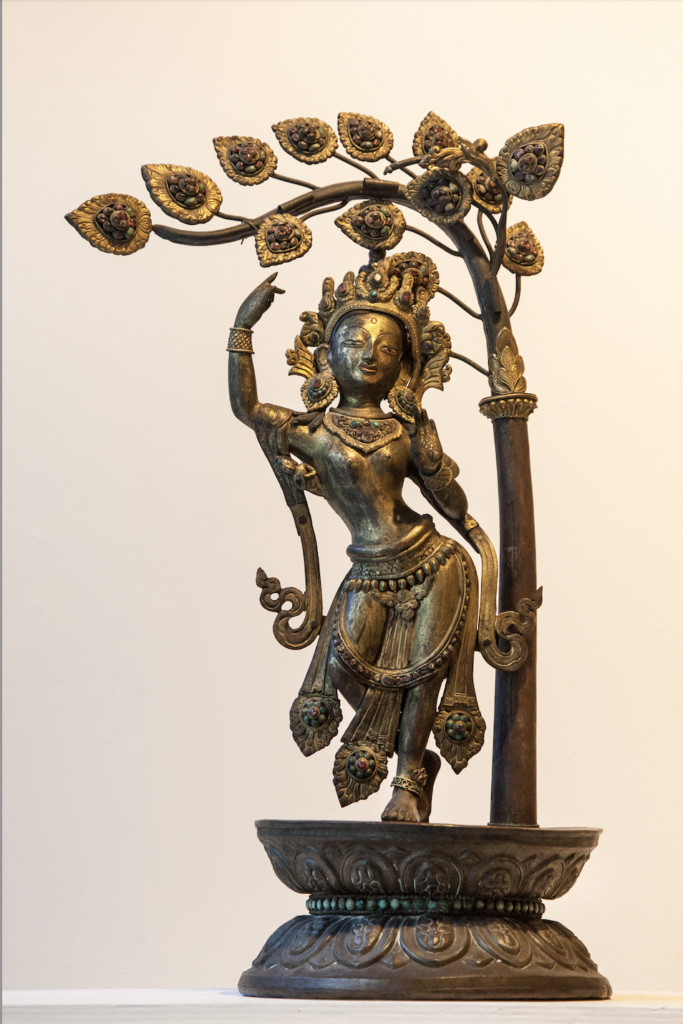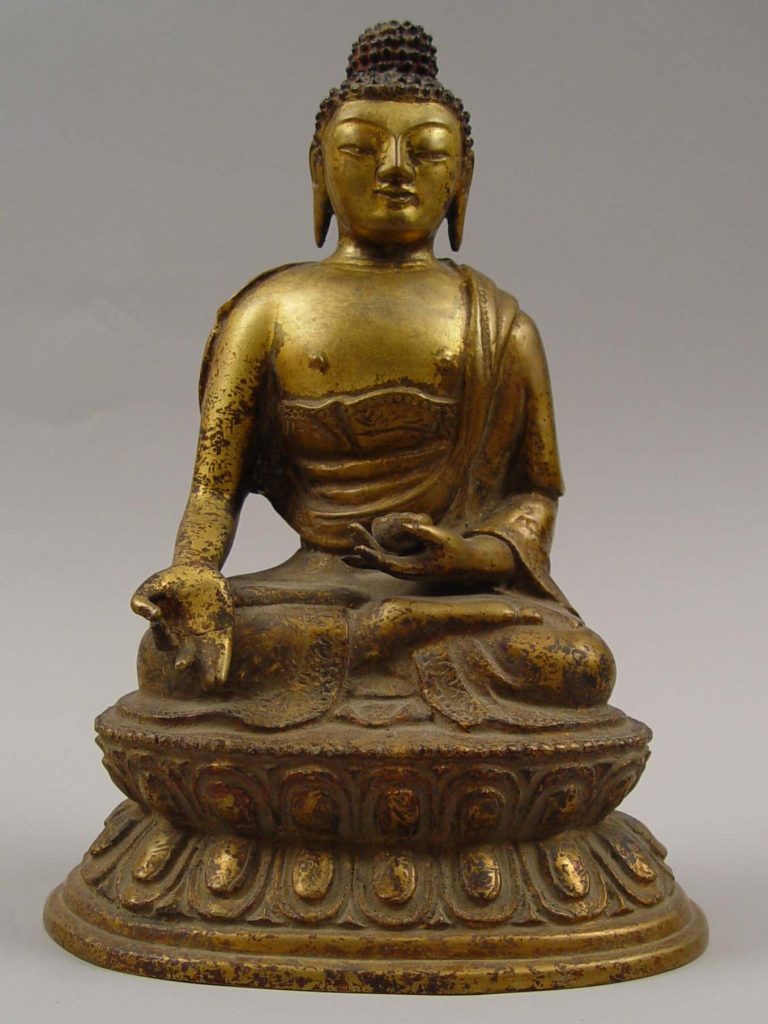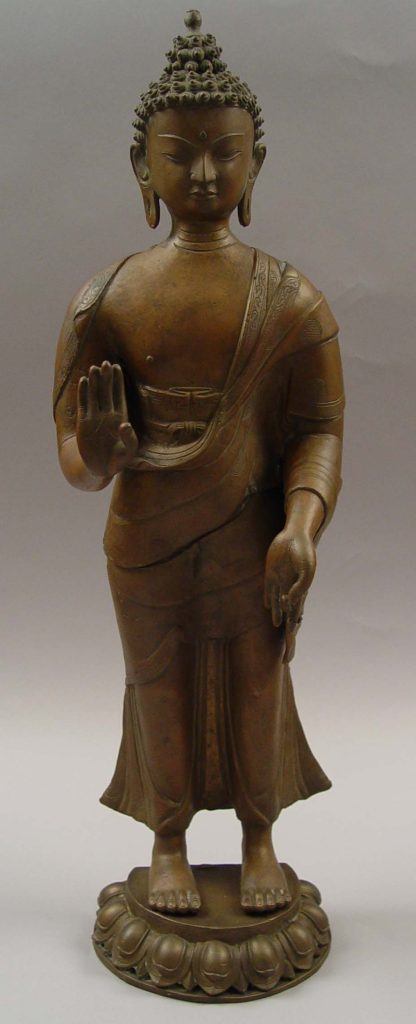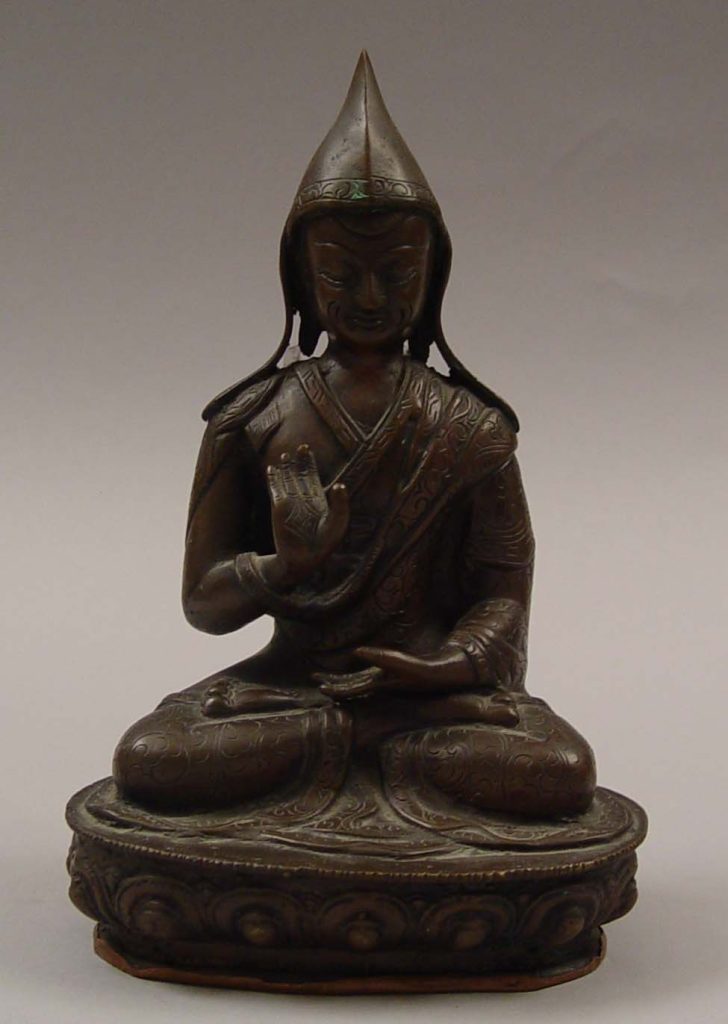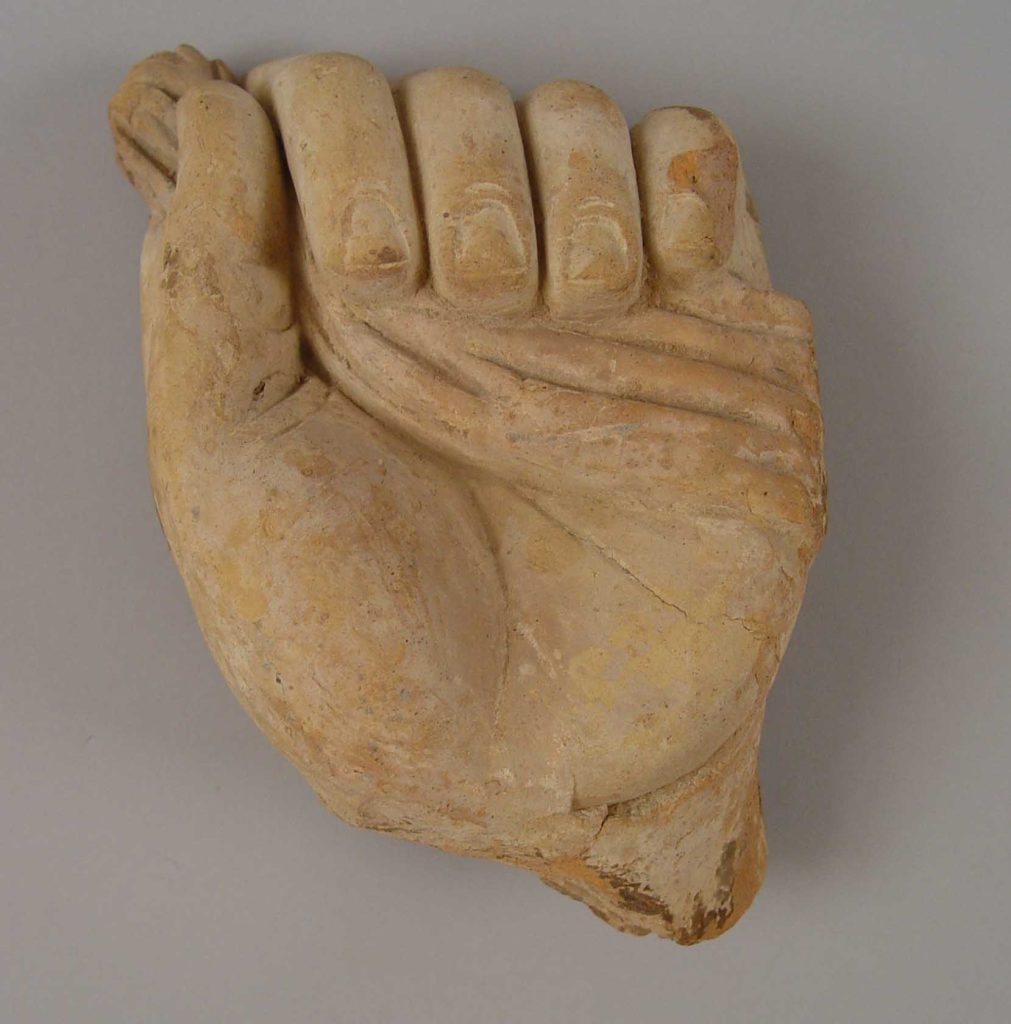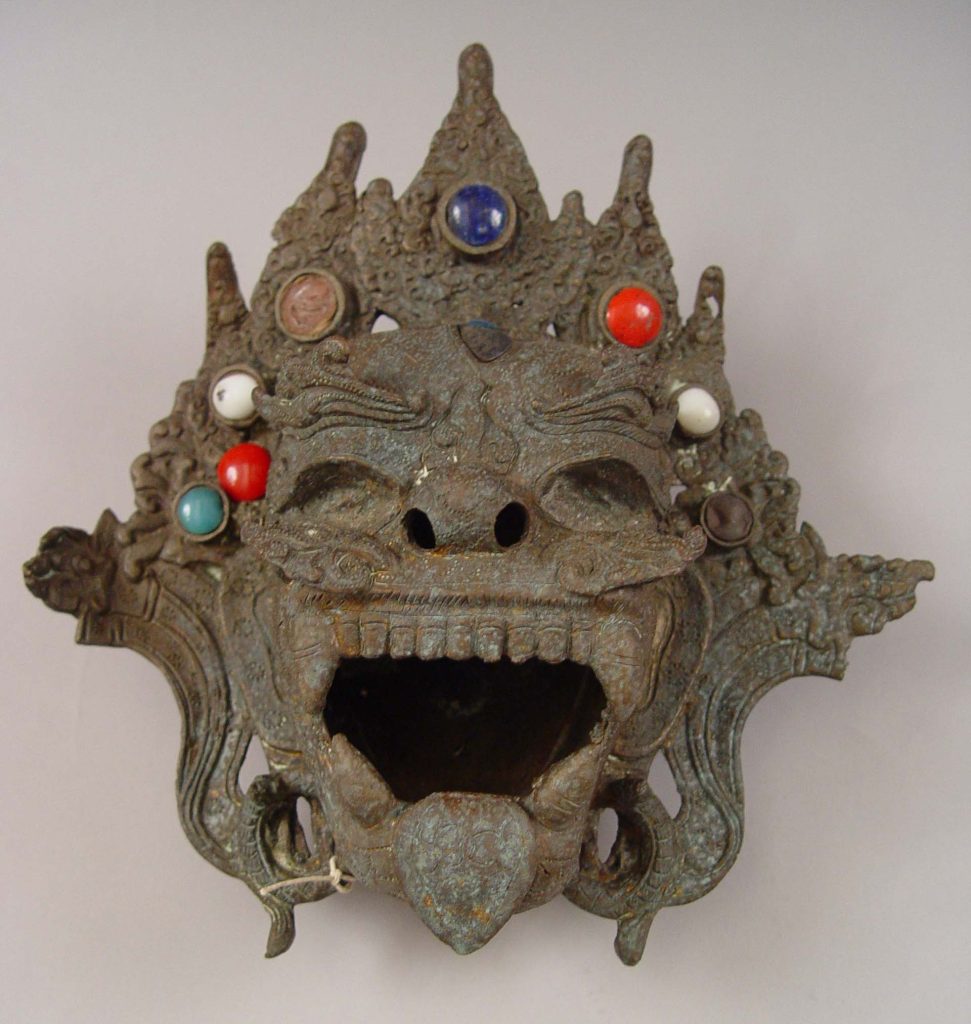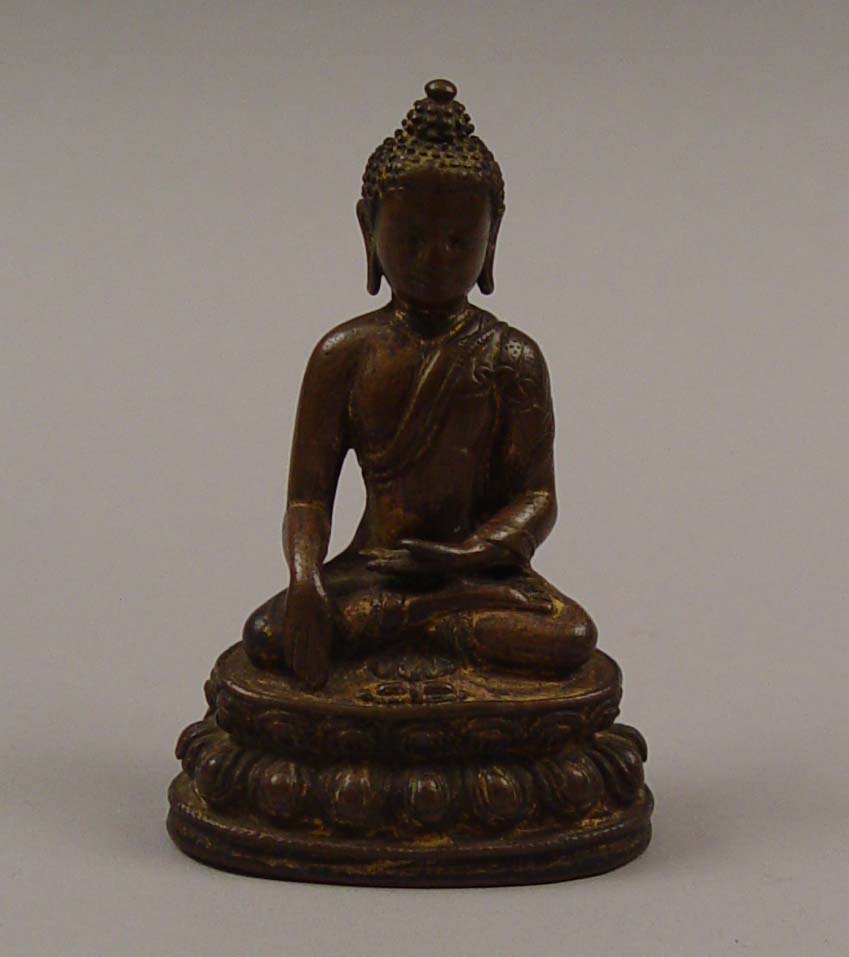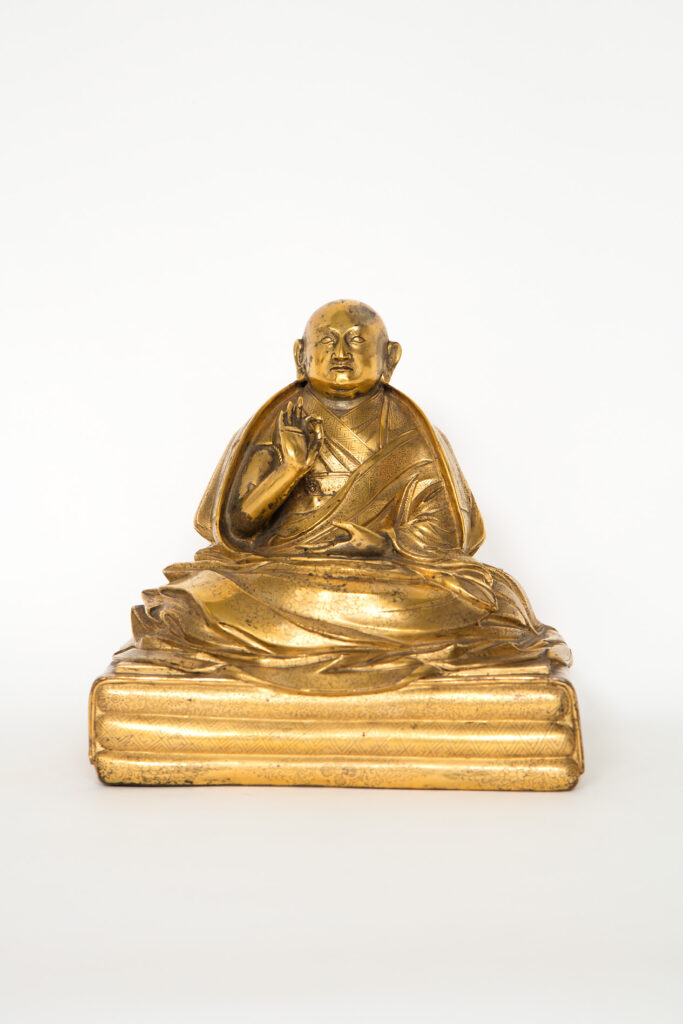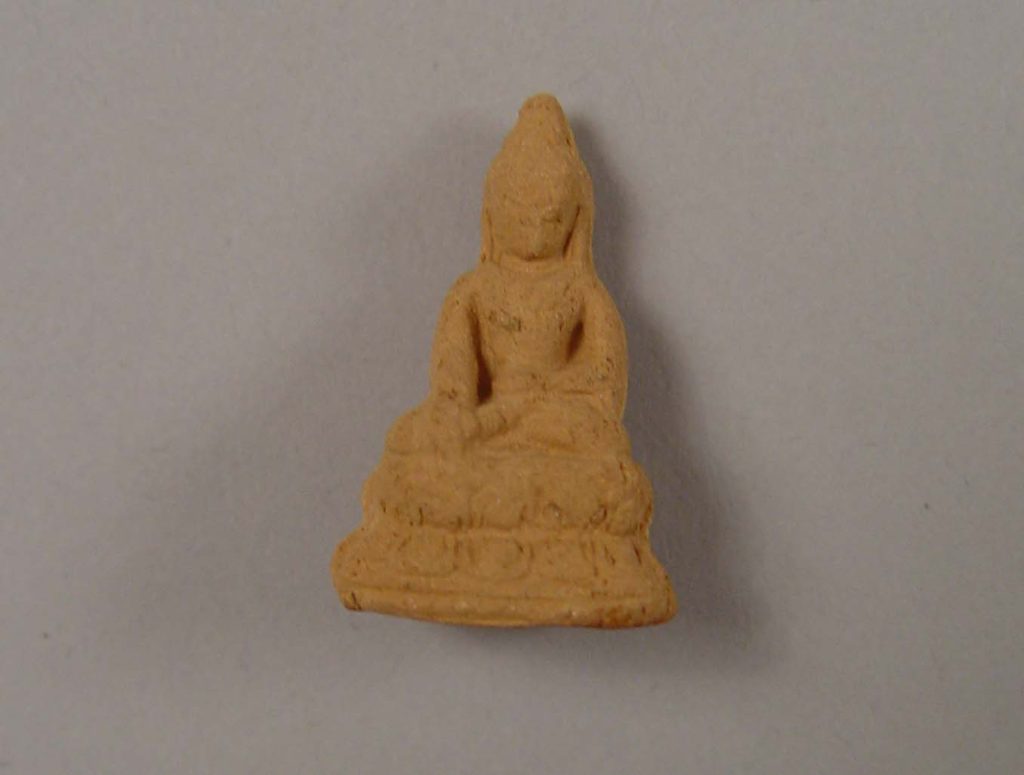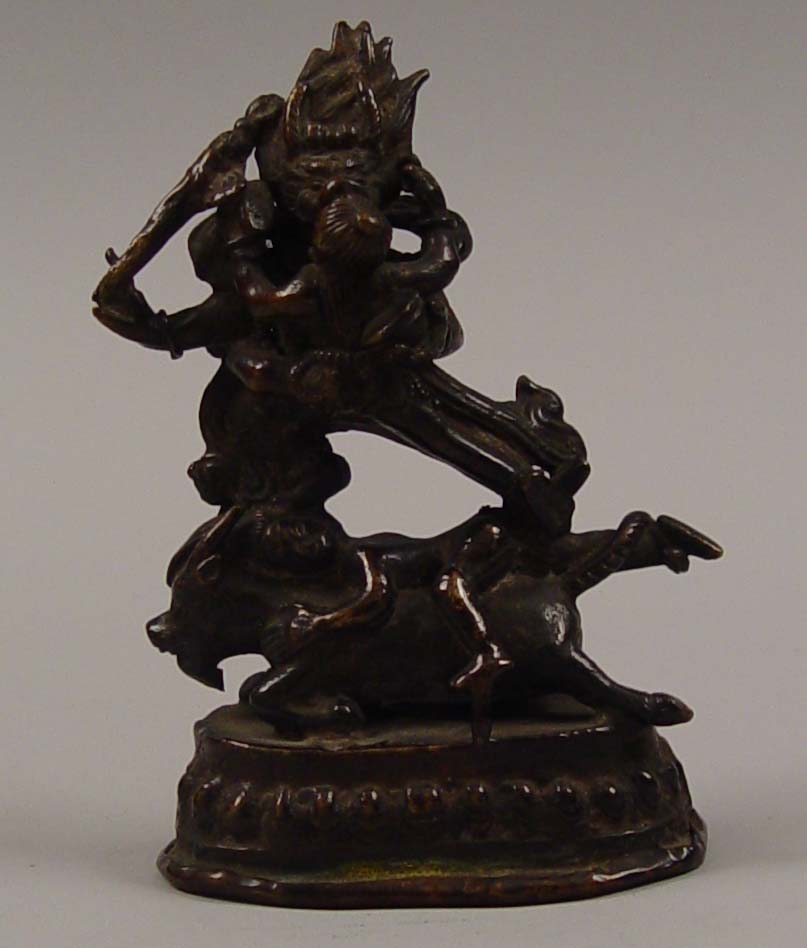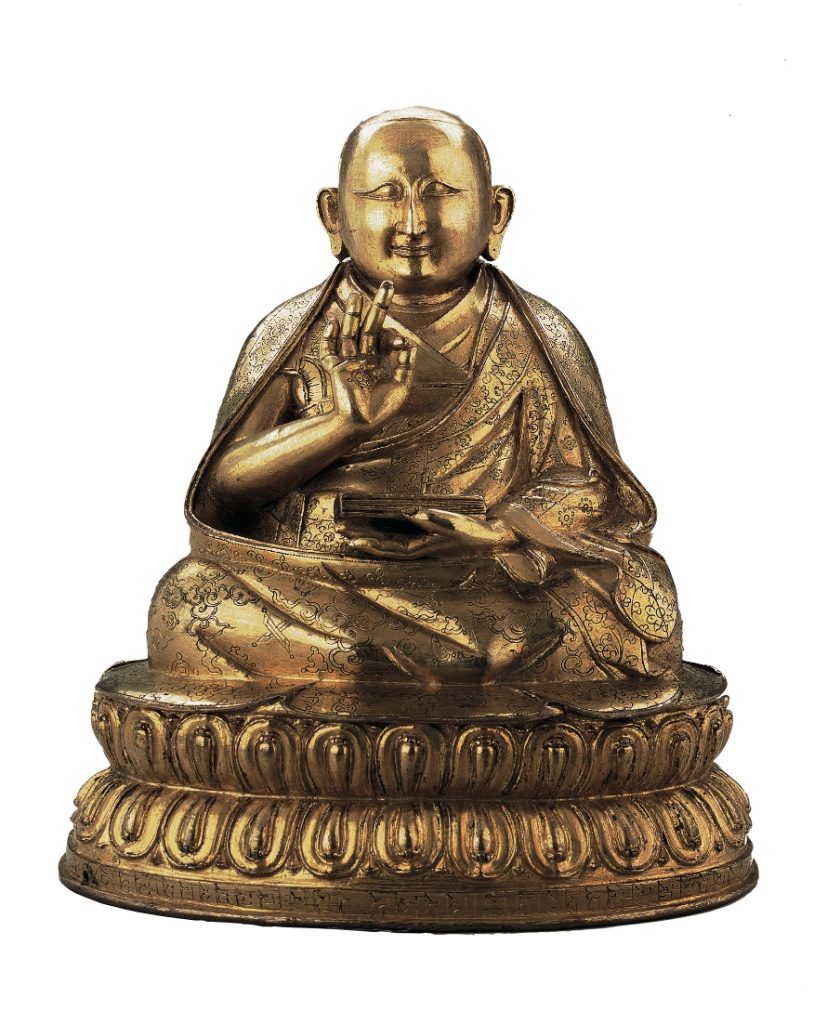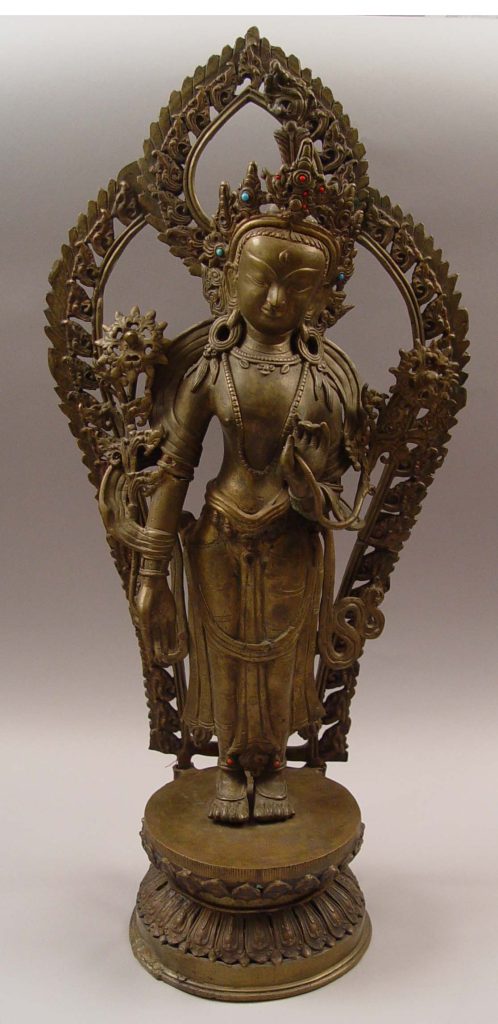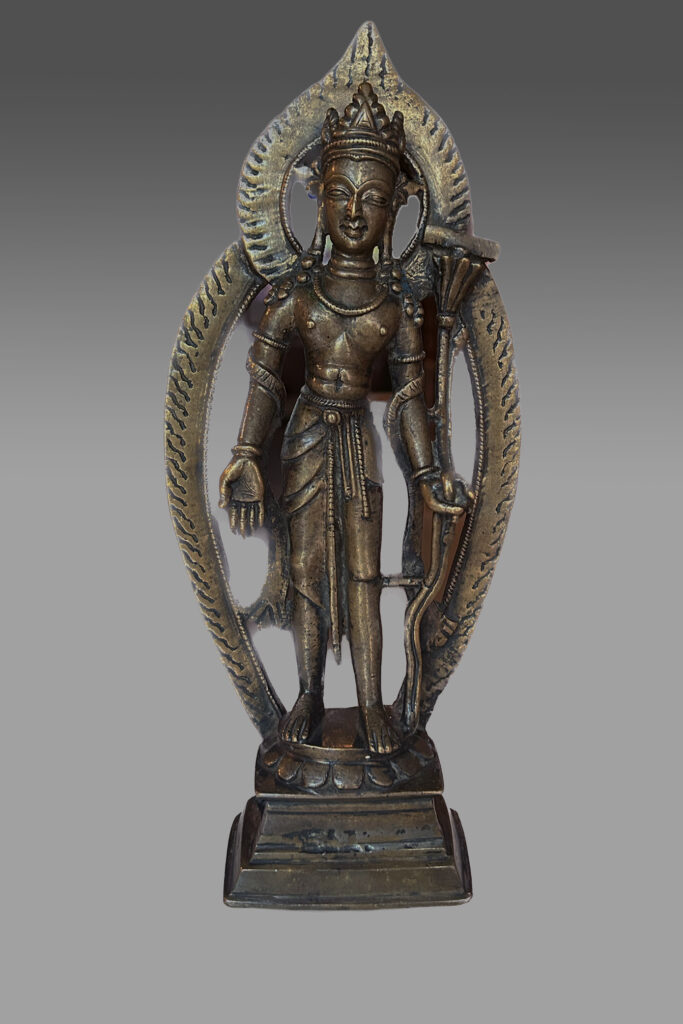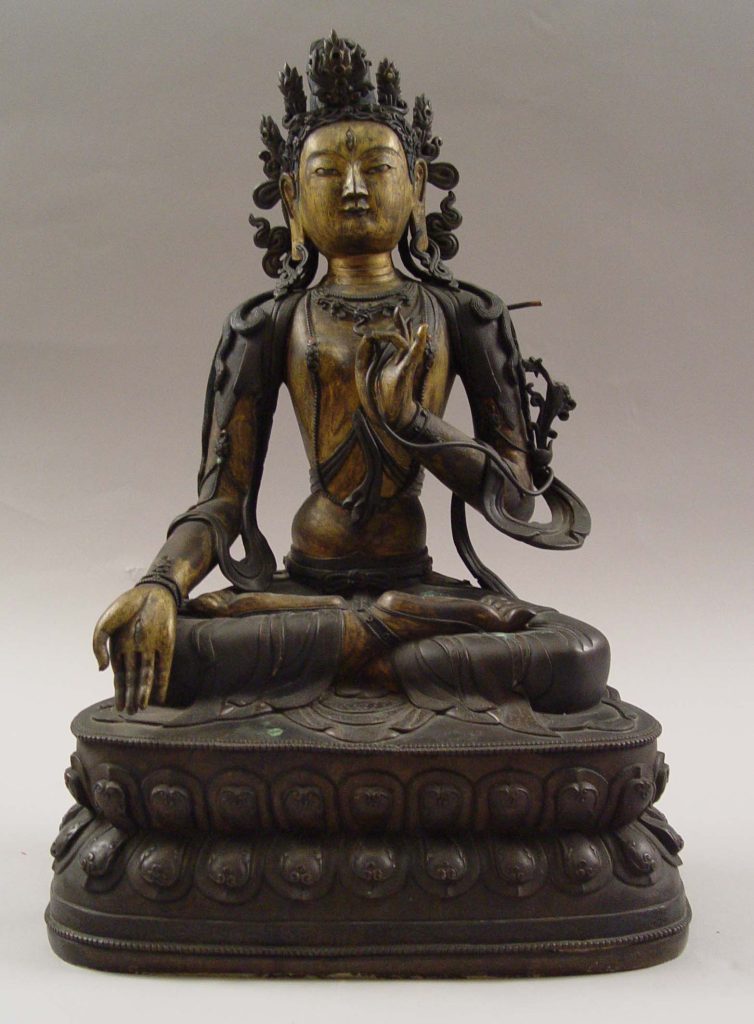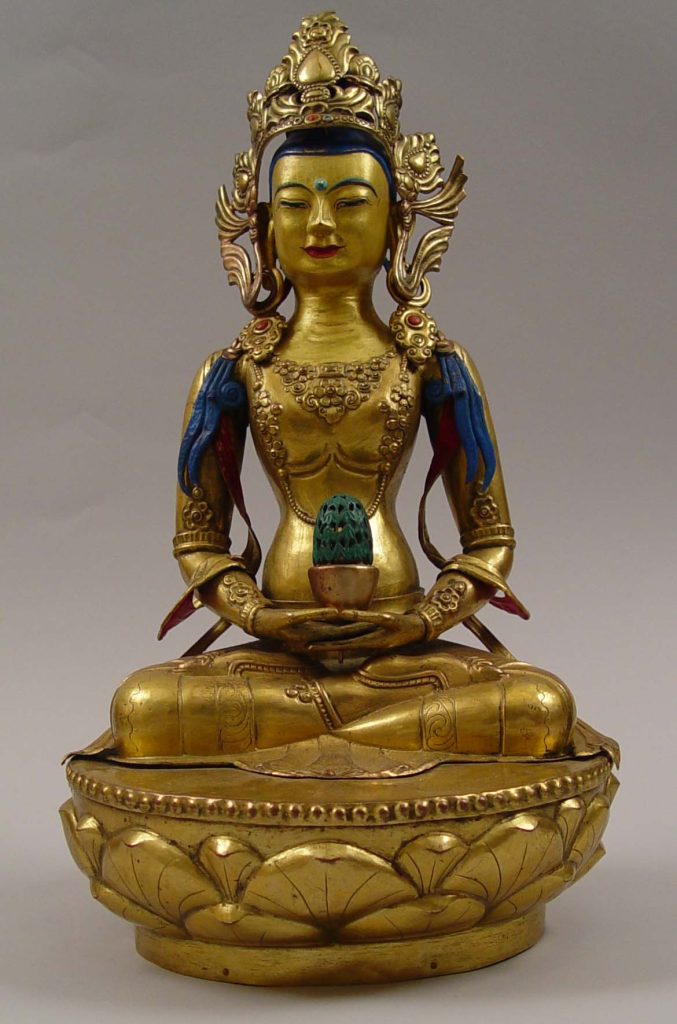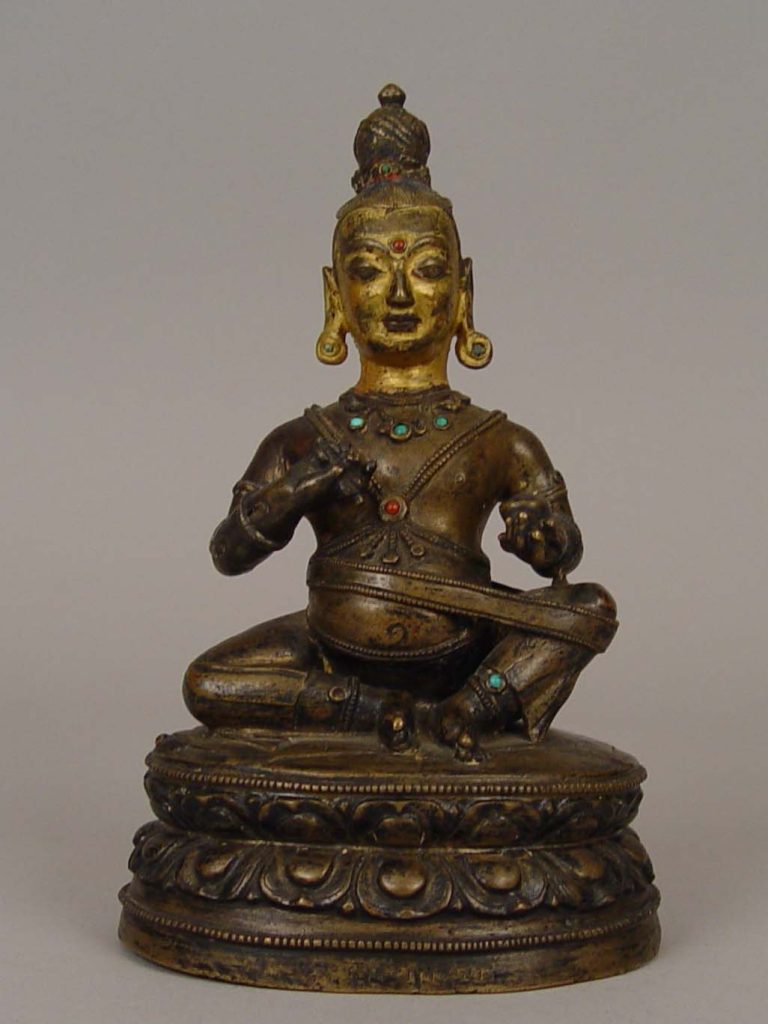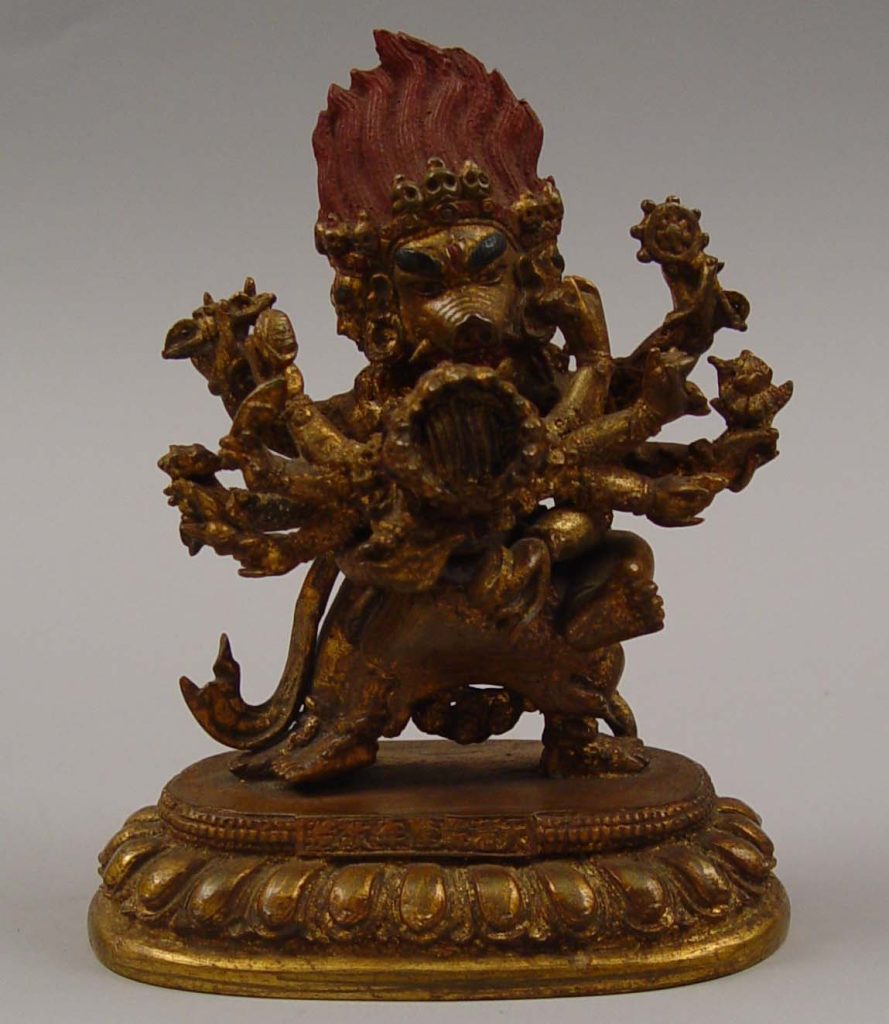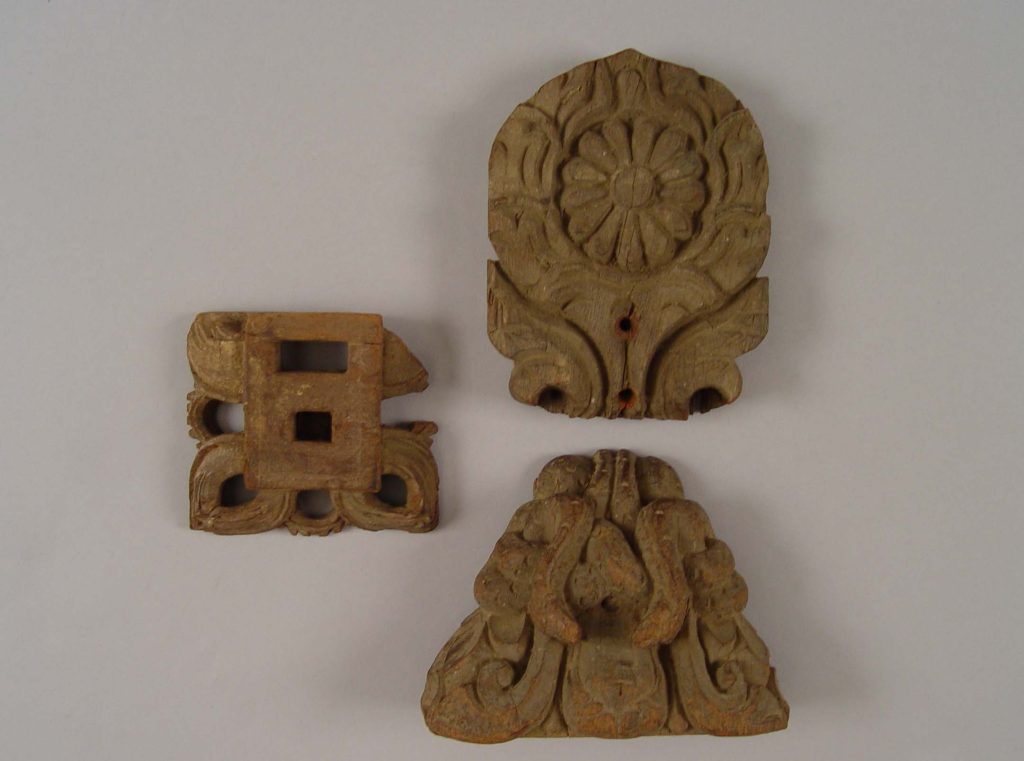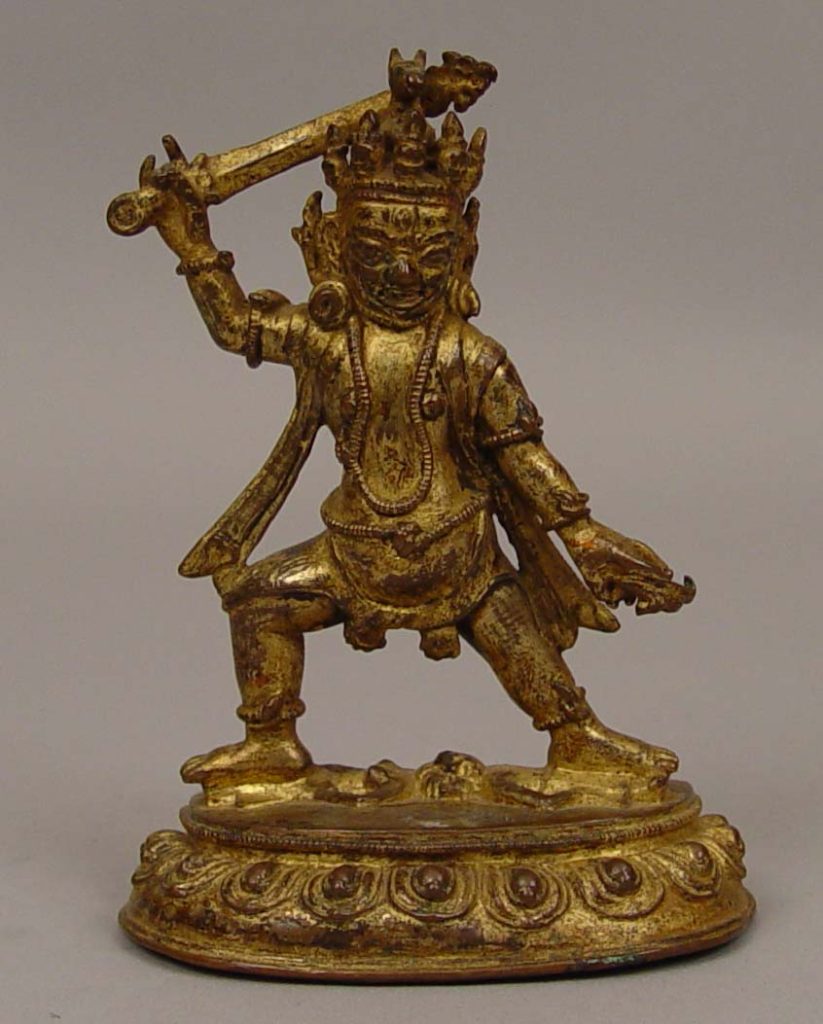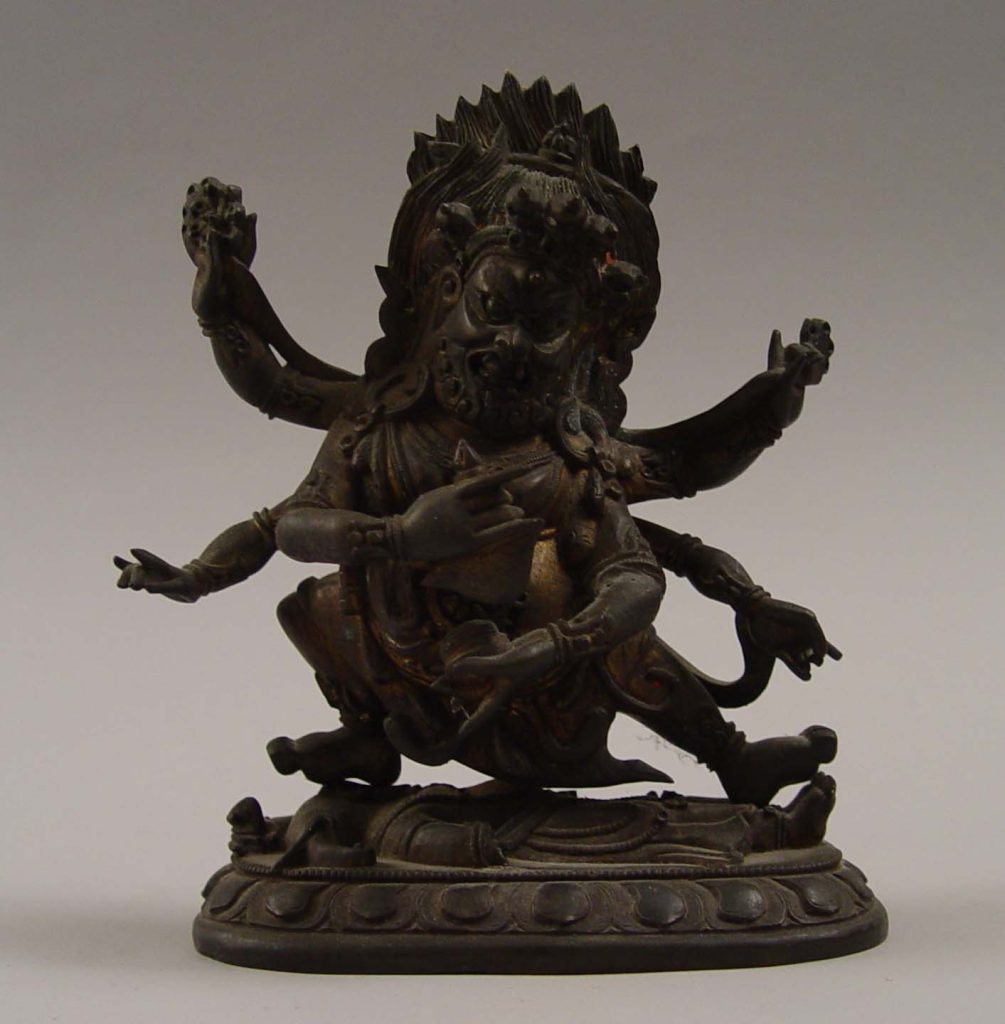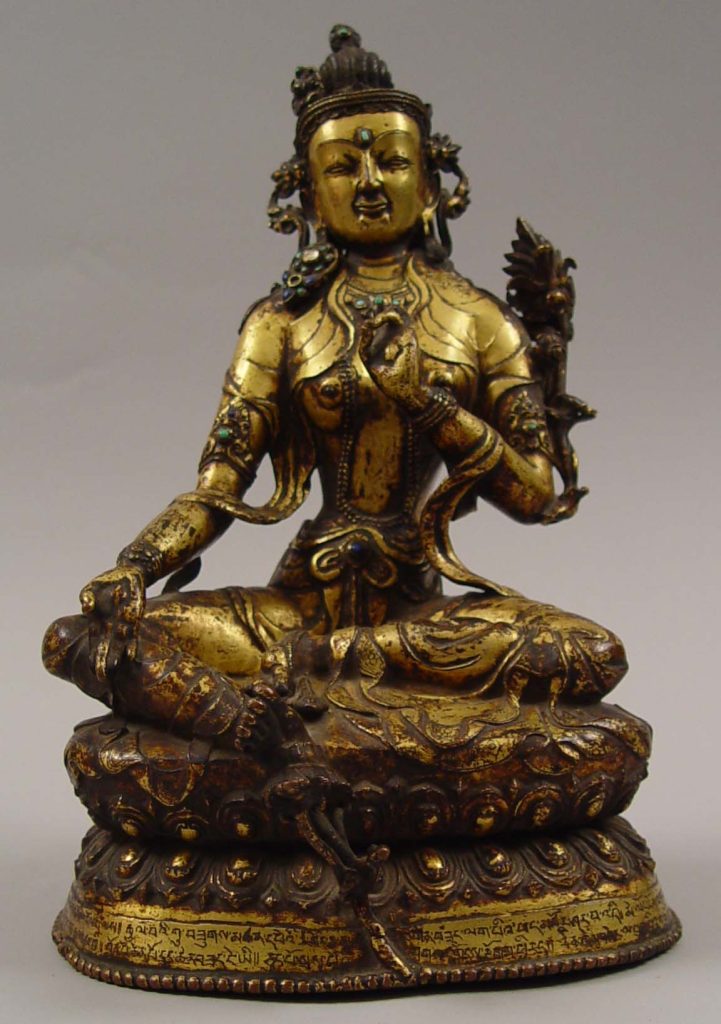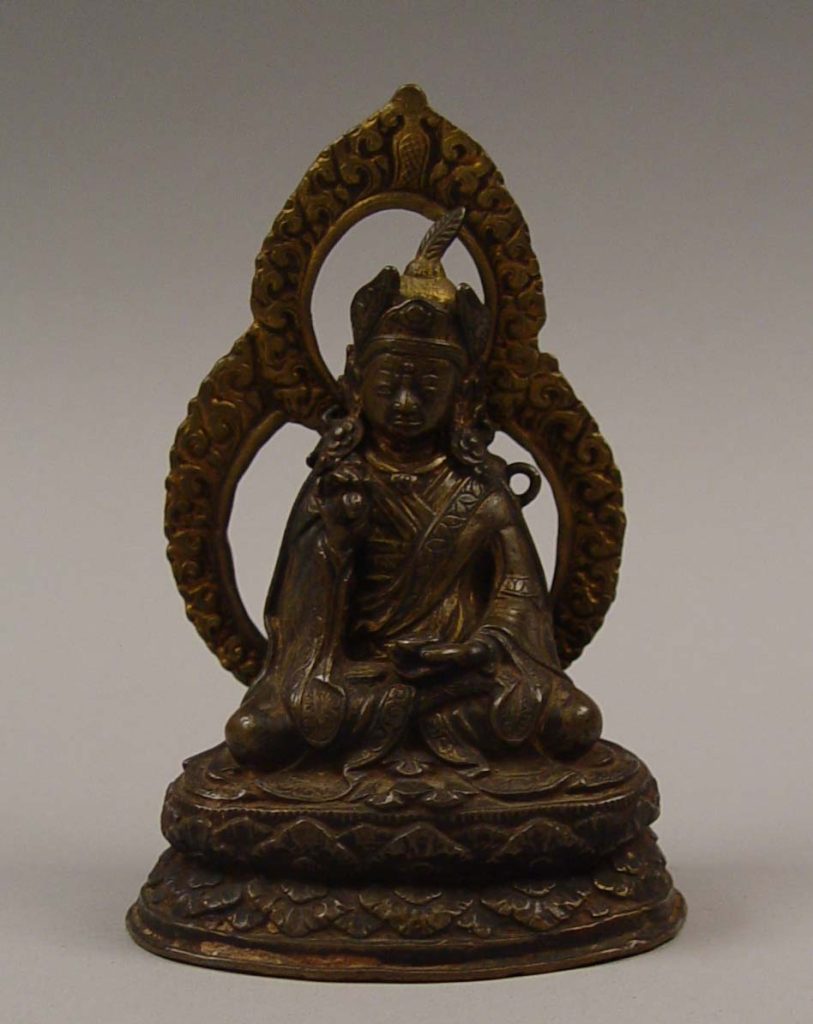A famous celestial Bodhisattva, he represents the concentrated power of all Buddhas. Vajrapani is a complex deity with various forms. As the companion of the Buddha, he is a familiar figure in early Mahayana Buddhist texts. In art he is a major Bodhisattva (spiritual hero), distinguished by his holding of the vajra (scepter of compassion’s power). In tantric Mahayana tradition, Vajrapani is most frequently encountered in his fierce emanation, in which he is a powerful protector and remover of obstacles. It is also said that Vajrapani will become the last Buddha to appear in this world cycle. In the Geluk Order in particular, which was influential in Mongolian Buddhism, Vajrapani is often grouped with Avalokiteshvara and Manjushri. The three celestial Bodhisattvas are thought of as archangelic protectors, representing the power (Vajrapani), compassion (Avalokiteshvara), and wisdom (Manjushri) of all the Buddhas of past, present, and future. (…) Vajrapani is designated as the first of the one hundred sixty works of Tibetan art in this book, just as he is frequently found near the entrance to the shrine halls in Tibetan and Mongolian temples. On the popular level, Vajrapani, Holder of the Thunderbolt Scepter (symbolizing the power of compassion), is the angelic Bodhisattva who represents the power of all the Buddhas, just as Avalokiteshvara represents their great compassion, Manjushri their wisdom, and Tara their miraculous deeds. For the yogi, Vajrapani is an archetype deity of fierce determination and symbolizes unrelenting effectiveness in the conquest of negativity.
This gilt bronze Vajrapani sculpture is from Sang province, Shigatse. Red hair, turquoise sets inlaid in crown and earrings. Stands atop a lotus base.
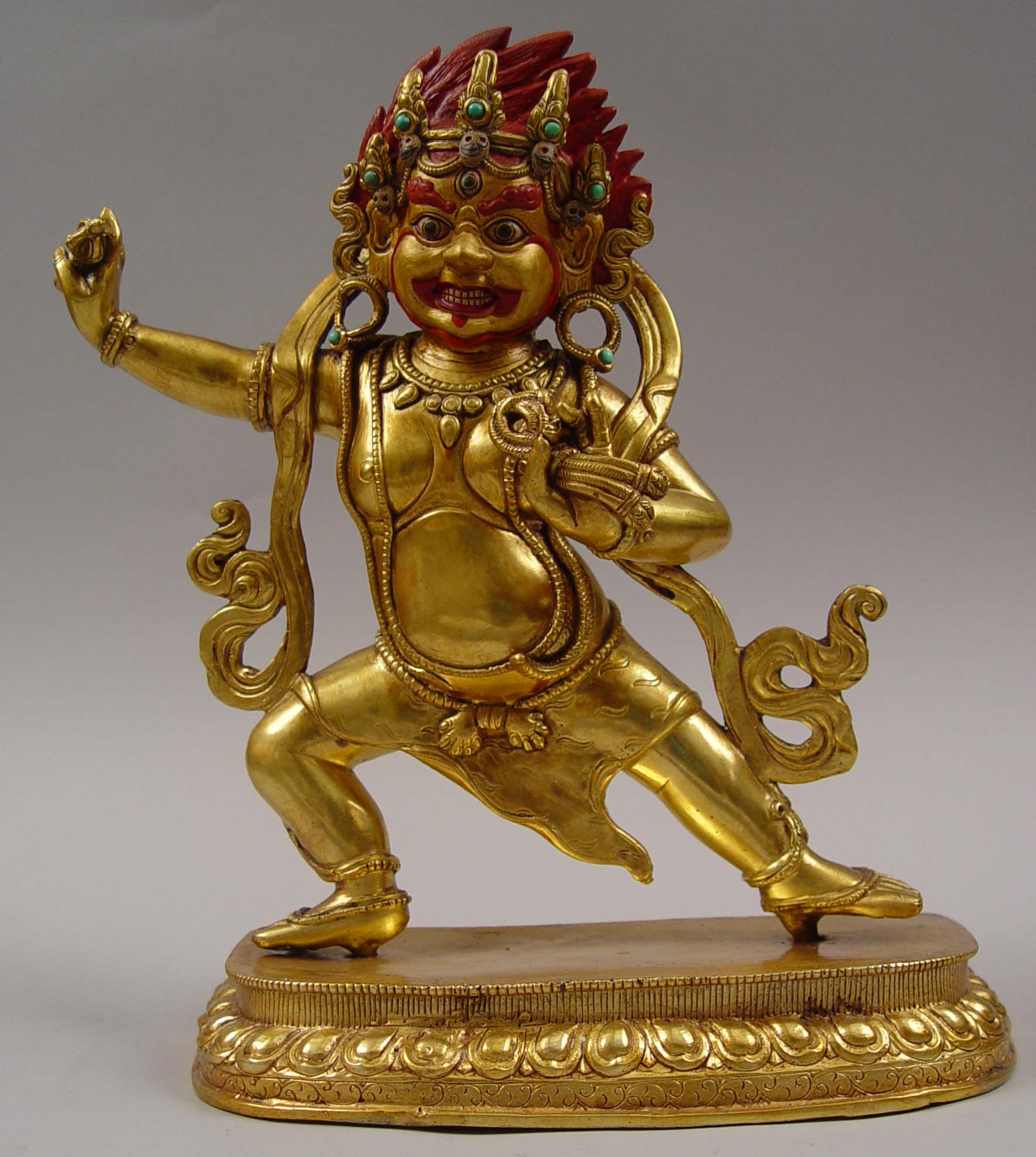
Vajrapani
དཔལ་ཕྱག་ན་རྡོ་རྗེ།
12" highDimensions:
- Object / Type: Sculpture
- Century: 19th Century
- Orgin: Tibet

